|
FOCUS / FORUM
INDEX
|
 |
In 2008, the Forum Comment,
was relaunched as the Focus
reflecting the closer comment from
NEMP and the panel of educators. |
 |
|
Main Index for Focus / Forum
Introduction
to Focus / Forum
He
Whakaputanga Whakaaro –
Introduction for Mäori
Medium forums
|
| Forums by year of assessment |
|
|
|
Science
Art
Graphs, Tables & Maps
|
|
|
|
Music
Aspects of Technology
Reading & Speaking |
|
|
|
Information
Skills
Social Studies
Mathematics |
|
 |
|
Listening
& Viewing
Health & Phys. Ed.
Writing |
|
| Forums for Mäori Medium |
|
|
|
Science
Art
Graphs, Tables & Maps
|
|
|
|
Music
Aspects of Technology
Reading & Speaking |
|
|
|
Information
Skills
Social Studies
Mathematics |
|
 |
|
Listening
& Viewing
Health & Phys. Ed.
Writing |
|
|
|
|
|
 |
|
 |
|
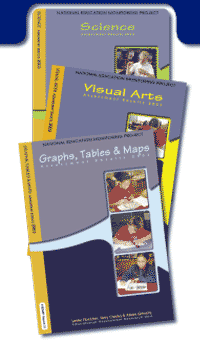
CLICK
on reports above to go directly
to comments |
|
FORUM
PARTICIPANTS
Sandra Aikin
Susan Apathy
Al Bell
Ann Brodie
Wendy Brooks
Denis Burchill
Doreen Gates
Alix Harris
Julie Hepburn
Lesley Hirst
Suzanne Lewis
Emily McDonagh
Bill MacIntyre
Maiki Marks
Mahina Melbourne
Helen Moore
Alex Neill
Michael Nicholson
Liz Patara
Rhonda Phyn
Stephen Porteners
Graham Price
Austin Smith
Gary Sweeney
Sally Yeomanj |
|
The third
four-year cycle of national monitoring started in 2003.
Results from this third cycle will allow comparisons with
performances in the previous cycle of assessments.
The three reports on the 2003 assessment results were considered
by a national forum of teachers, subject specialists, representatives
of national organizations and government agencies, in June
2004. Their comments highlight what students are generally
doing well, and those areas where improvements are desirable.
The help of principals, teachers and Boards of Trustees in
making NEMP reports and this Forum Comment widely known is
encouraged and appreciated.
 |
Click
the Access Task icon for more information
about the tasks which will be available
to schools from December 2004. |
|
|
|
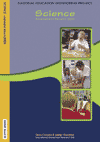 CLICK for
full report CLICK for
full report
|
GOOD
NEWS
• There is clear improvement from year 4 to year
8 in most aspects, with greatest gains achieved in
physical and material world tasks.
• Year 4 students showed continuing good performance
from 1999 with the concept of light.
|
• Year
8 students in 2003 showed improved performance from 1999
when designing and carrying out investigations, individually
and as teams.
• Year 8 students achieved greater success in 2003
than in 1999 on Planet Earth and Beyond tasks.
• Both year 4 and year 8 students scored well on
tasks which investigated their skills in developing scientific
questions.
 •
Year 4 and year 8 students performed better in 2003 than
in 1999 when investigating the material world. •
Year 4 and year 8 students performed better in 2003 than
in 1999 when investigating the material world.
• Many year 8 students demonstrated a good understanding
of causes, effects and remedies for environmental concerns.
• High percentages of year 4 (91%) and year 8 (83%)
students have positive attitudes towards doing science
at school.
|
 |
CONCERNS
• Many students, having made observations of scientific
phenomena, have difficulty explaining such phenomena because
they lack skills of reasoning, justifying, making connections,
and using scientific vocabulary.
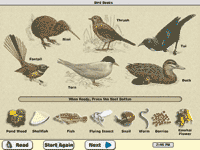 • There
was a substantial decline from 1999 to 2003 in year 4 students’
understanding of basic electrical circuits involving batteries
and bulbs. • There
was a substantial decline from 1999 to 2003 in year 4 students’
understanding of basic electrical circuits involving batteries
and bulbs.
• Pasifika students performed poorly across all science
strands and particularly with material world tasks.
• Especially at year 8 level, there has been a decline
since 1999 in the percentage of students who were highly
positive about their school science programmes.
• There is an imbalance between the amount of time
students spend on group work and research projects compared
to other valuable learning approaches and experiences. About
two-thirds of year 4 and year 8 students report that they
do experiments with science equipment only “sometimes”,
or “never”.
• The gap in achievement between students in high decile
and low decile schools remains large.
|
LOOKING
AHEAD –
SUGGESTIONS FOR PROGRESS
• Make greater use of the outdoors environment and everyday
practical situations and materials throughout all strands,
with emphasis on exploration, observation, investigation and
reasoning.
• Give careful attention to the relevance, meaningfulness
and learning intentions of science activities given to Pasifika
students, with particular emphasis on helping them to develop
the content knowledge and confidence needed for building and
communicating science understandings.
• Make full use of the Building Science Concepts series
and Science Exemplar material for developing programmes and
monitoring students’ learning.
•
Use a balanced range of learning approaches and activities
which recognise the value of practical “hands on” opportunities
along with the development of skills needed for good science
investigation.
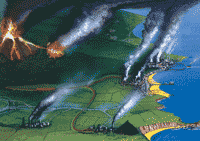 •
Constantly encourage and build students’ abilities
and confidence to talk about and discuss scientific ideas
and understandings. •
Constantly encourage and build students’ abilities
and confidence to talk about and discuss scientific ideas
and understandings. |
|
|
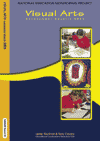 CLICK for
full report CLICK for
full report
|
GOOD
NEWS
• Students achieved a similar standard regardless
of gender, school size, or location.
• We celebrate the rich diversity of student responses
within a visual arts context.
• Student attitudes towards the visual arts were
positive. They appreciated opportunities to discuss and
investigate different art making media. |
• Year 4 Mäori students indicated strong positive
attitudes towards visual arts.
• By year 8, students have developed an ability to
identify a wider range of media and processes involved in
art making.
• There were substantial gains in drawing skills between
year 4 and year 8.
• Students do develop from year 4 to year 8 in their
ability to recognise similarities and differences in artists’ styles
and in their descriptions of immediately recognisable features
in sculpture.
|
 |
CONCERNS
• Few students were able to use paint with confidence to
make personal imaginative statements.
• In responding to artworks, most students had difficulty
going beyond description of recognisable subject matter, to elaborate,
interpret, construct, question, argue or analyse their initial
observations.
• Compared with 1999, year 8 students in 2003 reported
fewer opportunities to talk about art. Year 4 students have greater
access.
•
Mäori and Pasifika students performed less well than other
students on tasks that required them to consider, comment on
and discuss a range of artworks.
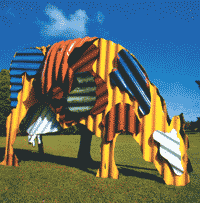 •
There were marked disparities between students from different
social settings in their ability to talk about art and to confidently
carry out making tasks involving paint and clay. •
There were marked disparities between students from different
social settings in their ability to talk about art and to confidently
carry out making tasks involving paint and clay.
• Most
students had difficulty interpreting and understanding artworks
derived from a Mäori context.
|
LOOKING
AHEAD –
SUGGESTIONS FOR PROGRESS
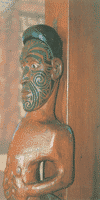 •
Students need improved opportunities to learn media skills
(example, using paint), and help with exploring, developing
and refining ideas and detail in their artworks. Students
need opportunities to practise and review these skills both
under guidance and independently. •
Students need improved opportunities to learn media skills
(example, using paint), and help with exploring, developing
and refining ideas and detail in their artworks. Students
need opportunities to practise and review these skills both
under guidance and independently.
These opportunities are needed particularly with paint, print
making, pastel and clay. Students’ development of ideas
using these media benefits from confidence built up through
experience.
• Students’ progress will be assisted when they
are supported with constructive feedback on their work in
progress, particularly in their conveying of movement and
space.
• The development of successful strategies, including
modelling of language, is needed to encourage individuals
and groups of students to communicate responses to artworks.
• All New Zealand students deserve access and richer
opportunities for discussion around the cultural heritage
of artworks arising from within New Zealand cultural contexts,
particularly Mäori art. |
|
GRAPHS,
TABLES and MAPS 2003 |
 |
|
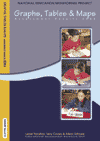 CLICK for
full report CLICK for
full report
|
GOOD
NEWS
• On average, there was substantial progress between
year 4 and year 8 in skills of interpreting and constructing
graphs, tables and maps. This improvement has been maintained
from 1995 through to 2003.
• About 75 percent of year 8 students performed
well on most tasks involving interpretation of graphs,
tables and maps. |
• School type, school size, community size, geographic
location and student gender were not important factors in
determining student achievement.
• The tasks covered a wide range of contexts, so the
relatively high success of year 8 students indicates a broad
rather than narrow capability.
|
 |
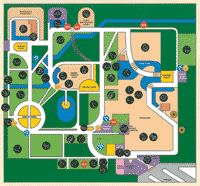 CONCERNS CONCERNS
• A large number of students did not manage to provide
appropriate titles for graphs and labels for axes.
• Many students have difficulty succeeding with tasks that
require them to work with more than one variable at a time.
• The low achievement of Pasifika students across the majority
of tasks is a particular concern, with the gap widening a little
from year 4 to year 8.
• Student performance continues to correlate highly with
school decile.
• There was a slight decline from 1999 to 2003 in achievement
of year 4 students in constructing graphs, tables and maps.
|
LOOKING
AHEAD –
SUGGESTIONS FOR PROGRESS
•
All students, particularly Mäori and Pasifika, need
experiences and guidance to help them develop, use and understand
the language and formats of graphs, tables and maps.
• Students need to recognise the importance of titles,
labels and scales, and many need instruction and practice
in locating and writing accurate titles and labels on graphs.
• Students should be encouraged to consider approximate
answers to questions about graphs as a step towards attempting
final answers.
• Students need opportunities to develop higher order
thinking skills involved in dealing with more than one variable
at a time and in seeing connections between variables.
• By year 8, students should have developed the skills
of transforming simple data to different formats: tables
to graphs, and graphs to tables. |
|
|
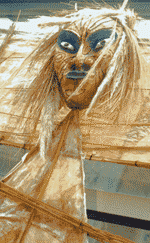 In
all three areas – Science; Visual Arts; and
Graphs, Tables and Maps – the pattern of
achievement for Mäori and Pasifika students
compared to non-Mäori and non-Pasifika students
has continued to show unsatisfactory disparities
across the four-yearly intervals of monitoring.
Mäori and Pasifika students are more confident
with tasks that rely on everyday language for responses.
But when subject specific knowledge and concepts
are needed, these students are less successful. In
all three areas – Science; Visual Arts; and
Graphs, Tables and Maps – the pattern of
achievement for Mäori and Pasifika students
compared to non-Mäori and non-Pasifika students
has continued to show unsatisfactory disparities
across the four-yearly intervals of monitoring.
Mäori and Pasifika students are more confident
with tasks that rely on everyday language for responses.
But when subject specific knowledge and concepts
are needed, these students are less successful.
LOOKING
AHEAD –
SUGGESTIONS FOR PROGRESS
Special attention is needed to help Mäori and
Pasifika students expand their knowledge and use of
subject-specific language and concepts. This is essential
for communicating understandings, processes and meanings.
Importantly, their fluency of ideas and language needs
to be developed through meaningful experiences and
contexts that they can relate to. |
|
|
 |
| |
|